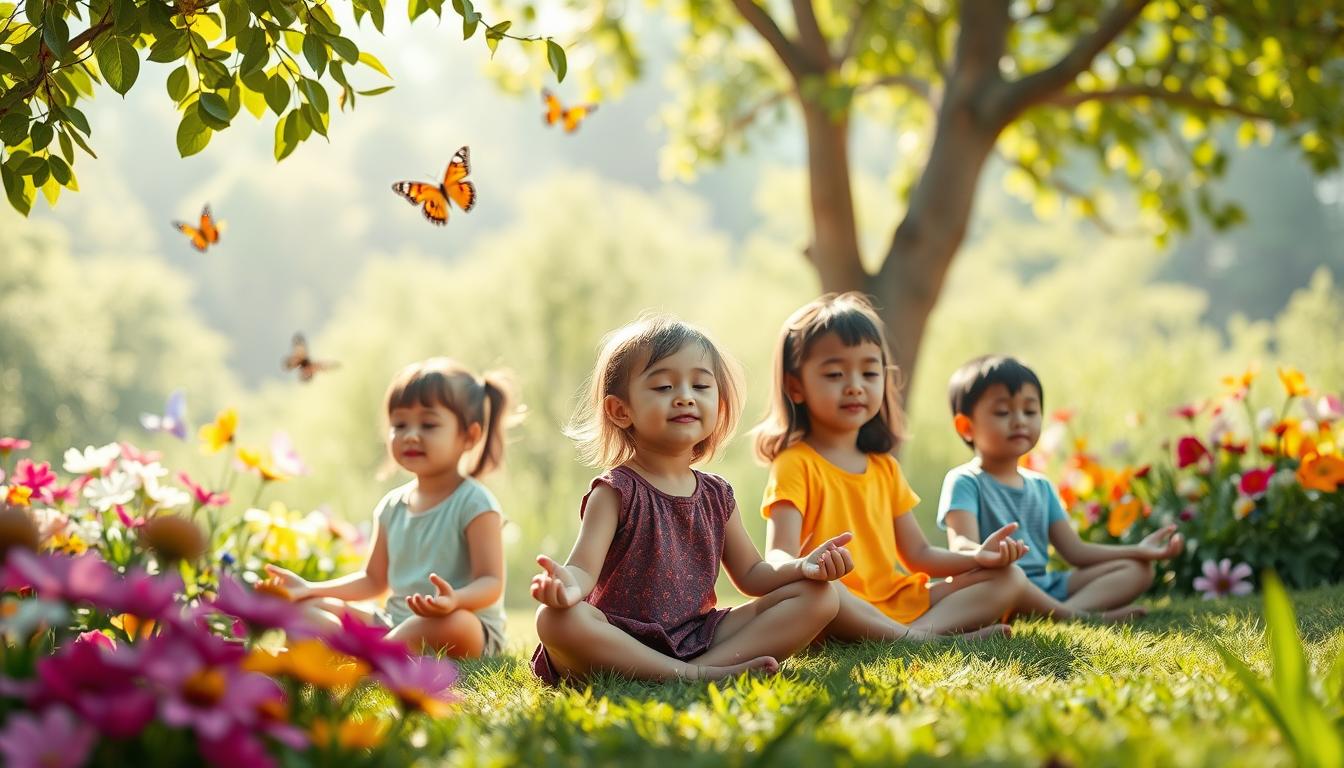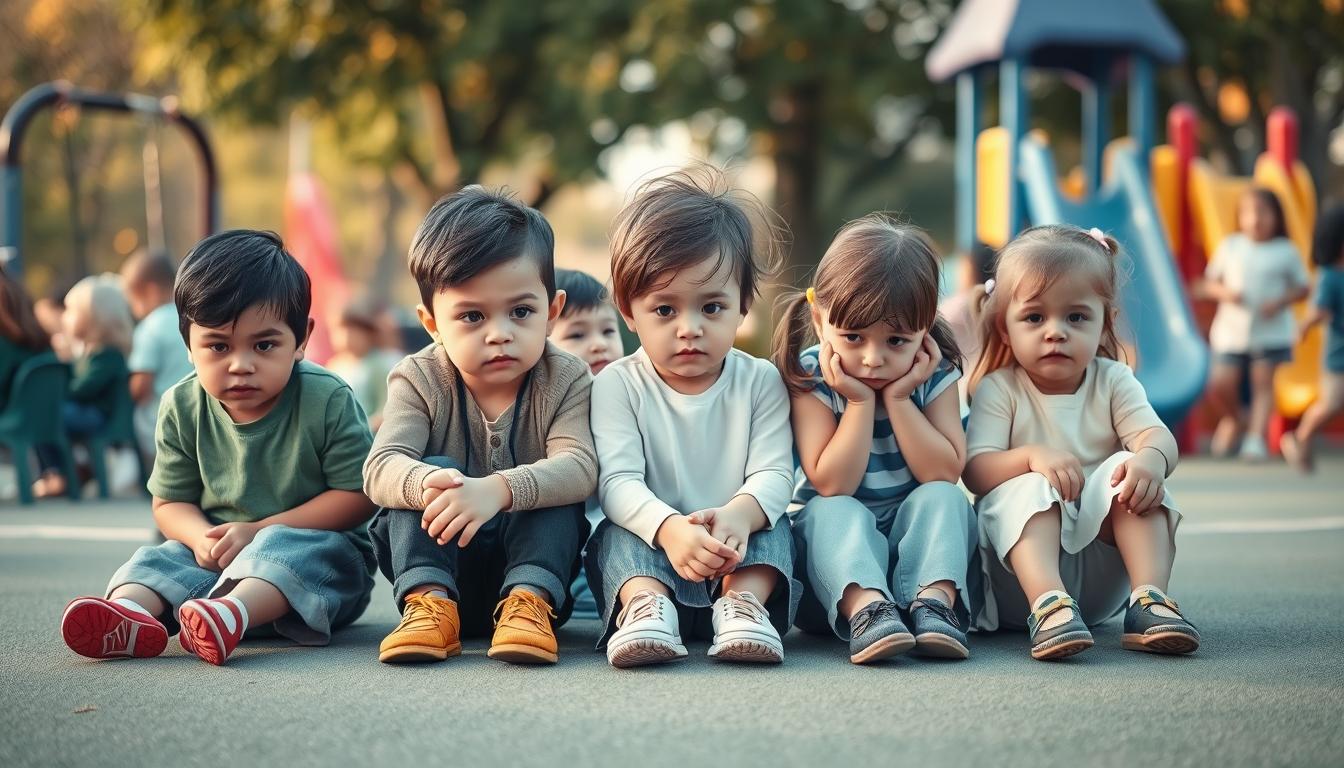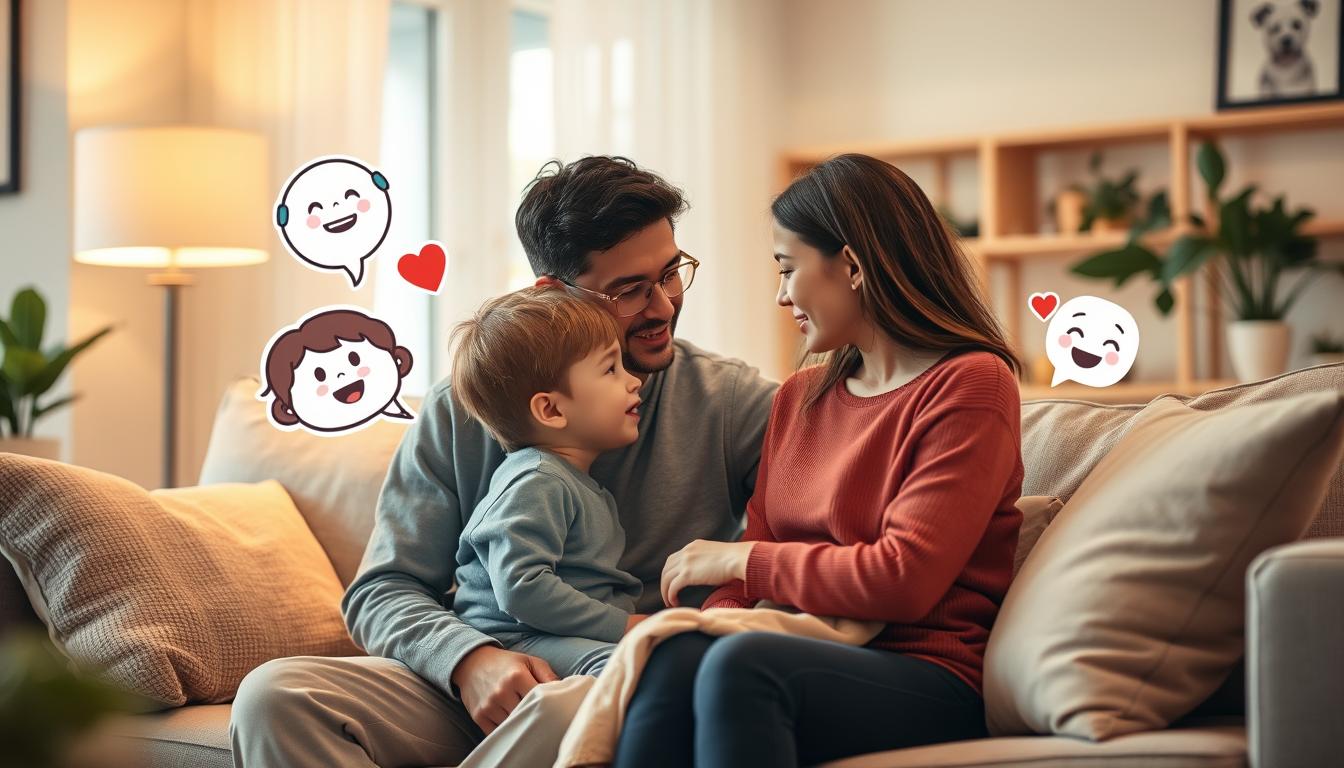Did you know nearly 1 in 5 kids in the United States face significant stress and anxiety before age 12? In today’s fast world, teaching kids mindfulness is more important than ever.
As a parent and wellness advocate, I’ve seen how meditation changes kids’ lives. It’s not just nice to have; it’s a must for today’s kids to handle life’s ups and downs.
Meditation helps kids deal with their feelings, focus better, and grow strong. It teaches them to calm their minds and understand their emotions.
Starting meditation early gives kids tools to handle stress, do better in school, and find peace within.
Key Takeaways
- Meditation helps children manage stress effectively
- Simple mindfulness techniques can improve concentration
- Early meditation practice builds emotional resilience
- Children can learn stress management skills quickly
- Meditation supports overall mental and emotional well-being
Understanding Childhood Stress in Today’s World
Childhood today is very different from the past. Kids face new challenges that cause a lot of stress and anxiety. The digital world, school pressures, and complex social scenes require new ways for parents and teachers to help.
Children today are stressed for many reasons. Let’s look at the main causes of stress for young minds:
- Intense academic expectations
- Social media comparison pressures
- Family dynamics and economic uncertainties
- Overscheduled daily routines
- Digital technology overload
Common Stress Triggers for Modern Kids
School has become very competitive. Kids feel a lot of pressure to do well, join many clubs, and keep up a perfect online image. Finding ways to calm young minds is key in today’s fast-paced world.
“Stress is not what happens to us. It’s our response to what happens.” – Hans Selye
How Stress Affects Children’s Development
Long-term stress can harm a child’s mind, feelings, and body. It can lead to:
- Reduced concentration abilities
- Weakened immune system
- Emotional regulation challenges
- Potential long-term mental health risks
Signs Your Child May Need Stress Management
It’s important to spot early signs of stress. Look for changes in sleep, mood swings, headaches, or pulling away from friends.
Acting early can stop long-term mental problems and help kids become strong.
The Science Behind Kids’ Meditation and Brain Development
Preschool mindfulness training shows how meditation changes young brains. Studies show amazing changes in brain paths when kids meditate often.
Brain scans show big improvements in kids’ thinking skills from meditation. This is because their brains can change and grow, helping them focus and handle stress better.
“Meditation is like a workout for the brain, helping children build emotional resilience and cognitive strength” – Dr. Sarah Neumann, Child Neuropsychologist
Important findings about meditation’s effects on kids’ brains include:
- More gray matter in parts of the brain for learning
- Better focus and concentration
- Better control over emotions
- Less stress in young brains
Regular meditation helps kids focus and manage stress better. Brain scans show clear improvements in how brain cells connect. This shows meditation is a powerful tool for young minds.
Researchers found key brain areas that benefit from meditation:
| Brain Region | Meditation Impact |
|---|---|
| Prefrontal Cortex | Improved decision-making and emotional control |
| Hippocampus | Enhanced memory and learning capabilities |
| Amygdala | Reduced stress and anxiety responses |
Knowing these changes helps parents support their kids’ mental growth with mindfulness.
Getting Started: Creating a Kid-Friendly Meditation Space
Creating a special meditation area for kids can make mindfulness fun and inviting. A calming space lets young minds learn to relax with joy and ease.
- Find a quiet spot with few distractions
- Use soft, calming colors
- Include comfy seating like cushions or bean bags
- Add natural elements like plants or soft lights
Age-Appropriate Meditation Tools
Each age group needs its own meditation tools. For little ones, visual and touch-based tools are best:
- Colorful meditation cushions
- Visual breathing guides
- Gentle sound machines
- Soft blankets for comfort
Making Meditation Fun and Interactive
Make meditation fun by adding creative elements. Use stories, games, and interactive breathing exercises to keep kids engaged.
“Meditation isn’t about sitting quietly, it’s about finding peace through play and curiosity.” – Child Meditation Expert
By creating a welcoming meditation space, parents can help kids develop mindfulness skills. They’ll enjoy the journey of self-discovery together.
Simple Breathing Exercises for Children
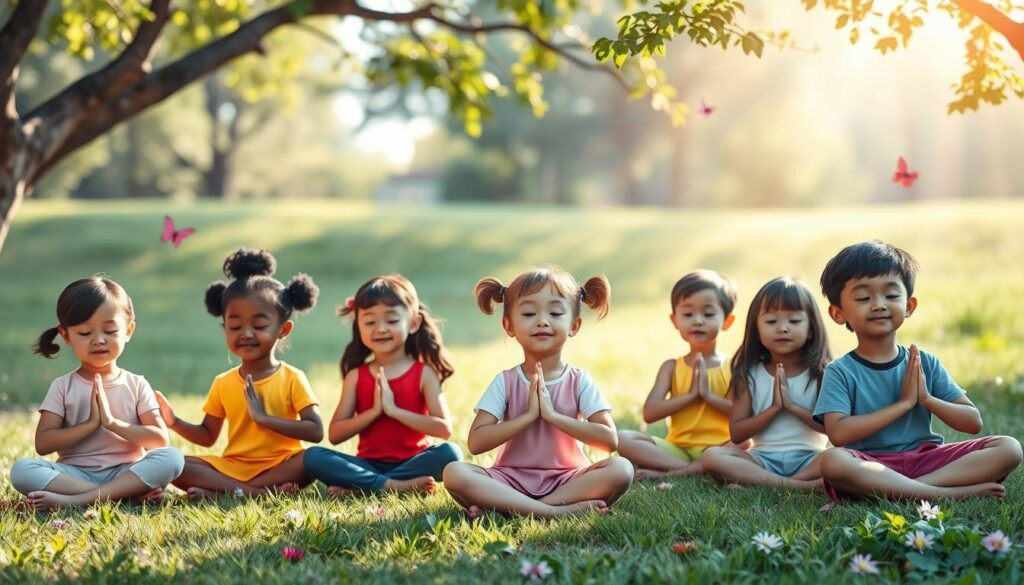
Introducing children’s meditation exercises can change how kids handle stress. Breathing is a key tool for managing emotions and finding calm. Let’s look at some fun, easy breathing techniques for kids.
“Breathing is the first act of life and the last. Our very life depends on it.” – Elizabeth Brown
Here are some playful breathing exercises for kids:
- Balloon Breath: Teach kids to imagine their belly as a balloon. Inhale slowly to inflate it, then exhale to deflate it.
- Flower and Candle Breath: Have children pretend to smell a flower (inhale) and then blow out a candle (exhale).
- Square Breathing: Guide children to trace a square while breathing. Inhale for 4 counts, hold for 4, exhale for 4, and pause for 4.
Make these stress relief techniques fun and interactive. Children’s meditation exercises should be enjoyable, not a chore. Practice together, make silly sounds, or use stories to keep them interested.
Age is important when teaching breathing techniques. Younger kids might like more imaginative methods. Older kids can handle more structured techniques. Be patient and consistent.
“Breath is the bridge which connects life to consciousness.” – Thich Nhat Hanh
By using these simple exercises, parents can help kids manage stress for life. The goal is to make breathing a natural, enjoyable part of their day.
Meditation for Kids: Benefits for Focus and Stress Management
Meditation is a powerful tool for kids to learn important life skills. It helps them focus better and manage stress. This leads to positive changes in many areas of their lives.
Exploring the benefits of meditation for kids shows how it changes young minds. Regular meditation improves their personal and academic growth.
Academic Performance Improvements
Studies show meditation boosts kids’ cognitive abilities. Students who meditate:
- Stay focused longer
- Remember things better
- Solve problems more effectively
- Learn faster
Emotional Regulation Benefits
“Meditation teaches children to pause and respond thoughtfully, not impulsively.” – Dr. Sarah Thompson, Child Psychologist
Meditation helps kids develop emotional intelligence. They learn to:
- Handle stress better
- Control their emotions
- Know themselves better
- Be more resilient
Enhanced Social Skills
Meditation improves kids’ empathy and communication. Regular practice helps them:
| Social Skill | Meditation Impact |
|---|---|
| Listening | Pay more attention |
| Empathy | Understand others’ feelings better |
| Conflict Resolution | Deal with issues more thoughtfully |
By making meditation a part of their routine, kids can reach their full growth and development.
Mindfulness Activities for Different Age Groups
Teaching mindfulness to preschoolers needs to be fun and engaging. For kids aged 3-5, activities that focus on sensory awareness are best. I suggest using simple, enjoyable exercises that help them connect with their surroundings.
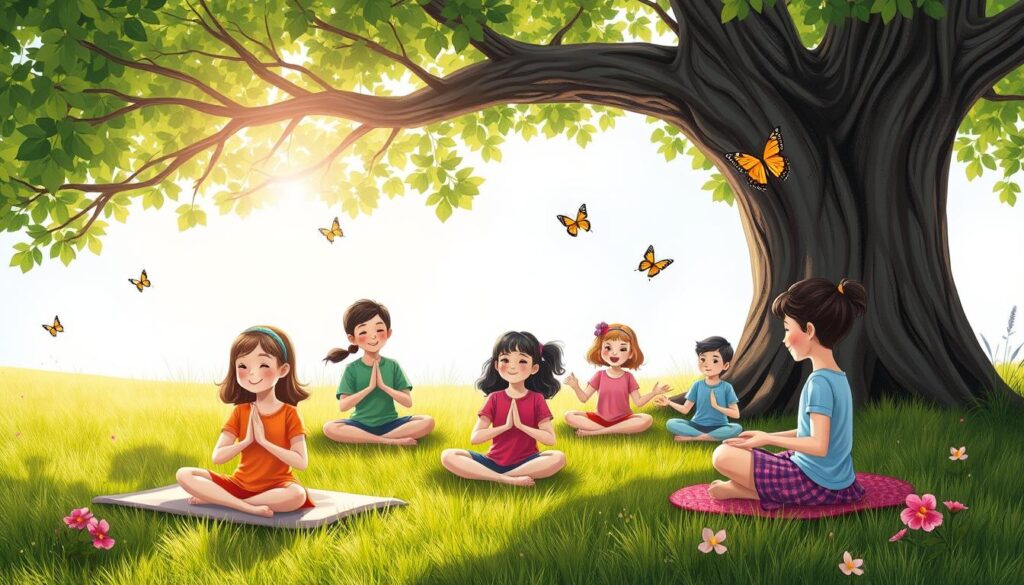
As kids get older, meditation helps them think more clearly. Here are mindfulness activities for different age groups to support their mental growth:
- Preschoolers (3-5 years)
- Breathing buddy meditation with a stuffed animal
- Mindful listening games
- Simple body scan exercises
- Early Elementary (6-8 years)
- Guided imagination journeys
- Emotion recognition activities
- Mindful coloring sessions
- Older Elementary (9-11 years)
- Reflection journals
- More advanced breathing techniques
- Gratitude meditation practices
“Mindfulness is not about perfection, but about creating awareness and connection with oneself.” – Child Psychology Research Institute
Each age group needs a special approach to mindfulness. By knowing how kids develop, we can teach meditation that fits their curiosity and learning ways.
| Age Group | Key Meditation Focus | Recommended Duration |
|---|---|---|
| Preschool (3-5) | Sensory Awareness | 2-5 minutes |
| Early Elementary (6-8) | Emotional Intelligence | 5-10 minutes |
| Older Elementary (9-11) | Self-Reflection | 10-15 minutes |
Starting mindfulness in preschool and continuing in elementary school takes patience and creativity. The aim is to make meditation a fun and natural part of kids’ emotional growth.
Incorporating Meditation into Daily Routines
Mindful parenting means making meditation a regular part of a child’s day. By adding meditation at key times, parents can teach kids to handle stress better.
Meditation doesn’t have to be hard. Simple steps can turn daily activities into chances for mindfulness and calm.
Morning Meditation Rituals
Morning meditation can start the day right. Here are some morning tips:
- Create a 5-minute breathing exercise before breakfast
- Use gentle stretching combined with mindful breathing
- Practice gratitude meditation while getting dressed
Bedtime Relaxation Techniques
Evening meditation helps kids relax and sleep better:
- Guided visualization exercises
- Soft background music during relaxation
- Progressive muscle relaxation
School Day Integration Tips
| Time of Day | Meditation Strategy | Duration |
|---|---|---|
| Before Tests | Deep breathing techniques | 3-5 minutes |
| Lunch Break | Mindful eating meditation | 5 minutes |
| Transition Periods | Quick body scan meditation | 2-3 minutes |
“Meditation is not about stopping thoughts, but recognizing that we are more than our thoughts and our feelings.” – Arianna Huffington
By using these mindful parenting methods, you can teach your child to manage stress for life. This is through regular meditation exercises.
Parent-Child Meditation: Building Stronger Bonds
Mindful parenting is a great way to bond with your kids. It turns meditation into a special activity for the whole family. This strengthens your family ties.
Starting a meditation routine together can really help your family. I’ve seen that when parents and kids meditate together, they talk better and understand each other more.
“Meditation is not about stopping thoughts, but recognizing that we are more than our thoughts and our feelings.” – Arianna Huffington
- Schedule regular family meditation sessions
- Choose age-appropriate techniques
- Make sessions playful and engaging
- Practice active listening during shared experiences
To help with mindful parenting, try these tips:
| Age Group | Meditation Approach | Duration |
|---|---|---|
| Preschool (3-5) | Guided Imagination | 3-5 minutes |
| Elementary (6-10) | Breathing Exercises | 5-10 minutes |
| Tweens (11-13) | Mindfulness Meditation | 10-15 minutes |
Remember, being consistent is important for a good meditation practice with your kids.
Addressing Common Challenges in Kids’ Meditation
Teaching meditation to kids can be tough. Parents and teachers face many obstacles. Knowing these challenges helps find better ways to help kids deal with anxiety.
Meditation with kids needs patience and creativity. It’s important to remember that every child is different.
Maintaining Interest and Consistency
It’s hard to keep kids interested in meditation. Here are some tips:
- Use storytelling during meditation
- Make meditation fun and short
- Give small rewards for regular practice
- Keep sessions lively and interactive
Dealing with Resistance
Some kids don’t want to meditate. Here’s how to handle it:
- Never push them to meditate
- Explain why meditation is good in simple terms
- Let them pick their own meditation style
- Start with very short sessions
Adapting Practices for Different Personalities
Meditation fits each child differently. Knowing your child’s personality helps tailor the approach.
| Personality Type | Recommended Meditation Style |
|---|---|
| Active/Energetic | Movement-based mindfulness |
| Quiet/Introverted | Guided imagery meditation |
| Creative | Art-integrated meditation |
“Meditation is a personal journey. What works for one child might not work for another.” – Child Psychology Expert
The main goal is to make meditation a positive, stress-free experience. It should help your child grow emotionally.
Success Stories and Research Findings
Looking into meditation for kids shows big changes in their feelings and thinking. A study from Stanford University found big boosts in focus and less stress for kids who meditate.
“Meditation isn’t just for adults. Children can learn powerful emotional regulation skills that last a lifetime.” – Dr. Elizabeth Roberts, Child Psychology Researcher
Studies show meditation helps kids’ mental health and school work a lot. They found big benefits for focus and handling stress.
- 65% of children showed improved concentration after 8 weeks of meditation practice
- Reduced anxiety levels in elementary school students
- Enhanced emotional intelligence and self-regulation
Real-life stories show how meditation changes kids:
| School | Meditation Program Duration | Student Improvements |
|---|---|---|
| Maple Grove Elementary | 12 weeks | 27% reduction in classroom disruptions |
| Riverview Primary School | 16 weeks | 35% increase in test score concentration |
These findings show meditation’s power to help kids grow and feel better emotionally.
Conclusion
Introducing mindfulness to kids is more than a trend. It’s a powerful way to help them grow emotionally and mentally. We’ve seen how stress relief techniques can deeply impact young minds.
These practices are not just quick fixes. They are skills that help kids face challenges with strength and calm. Parents and teachers are key in teaching kids about meditation and mindfulness.
By making these practices fun and supportive, we help kids develop emotional smarts. Mindfulness isn’t about being perfect. It’s about gently teaching kids to care for their minds.
I’ve seen how meditation changes a child’s way of dealing with stress and emotions. It improves focus in school and helps with social skills. Teaching kids stress relief is giving them tools to handle life’s ups and downs.
My advice is to start small and be patient. Approach mindfulness with curiosity and kindness. Every child is different, and what’s most important is creating a caring space for them to learn at their own speed.

